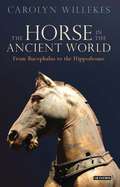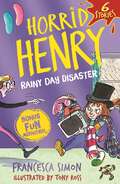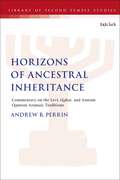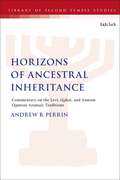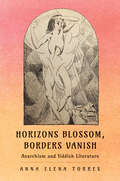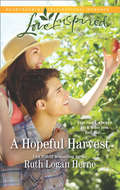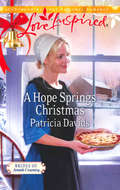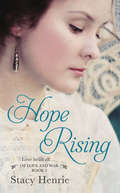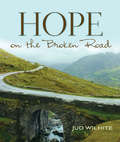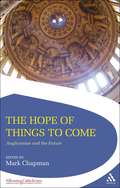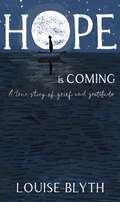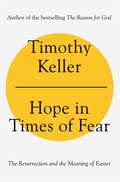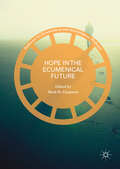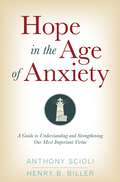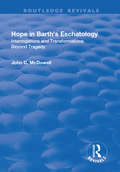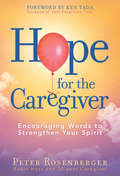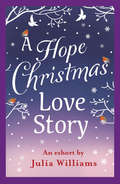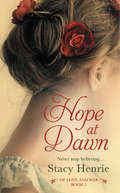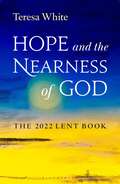- Table View
- List View
Horse of Karbala: Muslim Devotional Life in India
by D. PinaultHorse of Karbala is a study of Muharram rituals and interfaith relations in three locations in India: Ladakh, Darjeeling, and Hyderabad. These rituals commemorate an event of vital importance to Shia Muslims: the seventh-century death of the Imam Husain, grandson of the Prophet Muhammad, at the battlefield of Karbala in Iraq. Pinault examines three different forms of ritual commemoration of Husain's death - poetry-recital and self-flagellation in Hyderabad; stick-fighting in Darjeeling; and the 'Horse of Karbala' procession, in which a stallion representing the mount ridden in battle by Husain is made the center of a public parade in Ladakh and other Indian localities. The book looks at how publicly staged rituals serve to mediate communal relations: in Hyderabad and Darjeeling, between Muslim and Hindu populations; in Ladakh, between Muslims and Buddhists. Attention is also given to controversies within Muslim communities over issues related to Muharram such as the belief in intercession by the Karbala Martyrs on behalf of individual believers.
The Horse in the Ancient World: From Bucephalus to the Hippodrome (Library of Classical Studies)
by Carolyn WillekesThe domestication of the horse in the fourth millennium BC altered the course of mankind's future. Formerly a source only of meat, horses now became the prime mode of fast transport as well as a versatile weapon of war. Carolyn Willekes traces the early history of the horse through a combination of equine iconography, literary representations, fieldwork and archaeological theory. She explores the ways in which horses were used in the ancient world, whether in regular cavalry formations, harnessed to chariots, as a means of reconnaissance, in swift and deadly skirmishing (such as by Scythian archers) or as the key mode of mobility. Establishing a regional typology of ancient horses – Mediterranean, Central Asian and Near Eastern – the author discerns within these categories several distinct sub-types. Explaining how the physical characteristics of each type influenced its use on the battlefield – through grand strategy, singular tactics and general deployment – she focuses on Egypt, Persia and the Hittites, as well as Greece and Rome. This is the most comprehensive treatment yet written of the horse in antiquity.
The Horrors and Absurdities of Religion (Penguin Great Ideas)
by Arthur SchopenhauerA fascinating examination of ethics, religion and psychology, this selection of Schopenhauer's works contains scathing attack on the nature and logic of religion, and an essay on ethics that ranges from the American slavery debate to the vices of Buddhism. Throughout history, some books have changed the world. They have transformed the way we see ourselves - and each other. They have inspired debate, dissent, war and revolution. They have enlightened, outraged, provoked and comforted. They have enriched lives - and destroyed them. Now Penguin brings you the works of the great thinkers, pioneers, radicals and visionaries whose ideas shook civilization and helped make us who we are.
Horrid Henry: Rainy Day Disaster (Horrid Henry #999)
by Francesca SimonNumber One for Fiendish Fun! Join Henry in a bumper edition of mayhem with this boredom-beating collection of six of his best rainy day stories!Beat boredom on a rainy day with HORRID HENRY! This book contains six deviously daring rainy day stories about a BRILLIANT invasion, a MAD professor and a sleepover GONE WRONG! Plus loads of fun activities and jokes to keep Horrid Henry fans entertained.An irresistible introduction to reading for pleasure - the perfect gift for Horrid Henry fans everywhere.
Horizons of Ancestral Inheritance: Commentary on the Levi, Qahat, and Amram Qumran Aramaic Traditions (The Library of Second Temple Studies)
by Andrew B. PerrinIn this study of the Aramaic materials at Qumran, Andrew B. Perrin examines the Aramaic Levi Document, Words of Qahat, and Visions of Amram, showing how they exhibit a concentration of priestly concerns/knowledge and exploring new models for evaluating their potential textual or traditional connections. The Aramaic texts among the Dead Sea Scrolls are among the most understudied items in the Qumran collection, and with open questions posed around their origins, transmission, and reception in and beyond the Second Temple period, these writings provide both new materials and fresh insight into the thought, identity, and practice of ancient Judaism.Perrin's analysis includes a new transcription, critical notes, and translation of the Aramaic Levi, Qahat, and Amram fragments based upon the latest digital images. He pairs them with a comprehensive commentary on the conceptual elements, codicological features, and cultural contexts of the materials, and he concludes with a fresh synthesis regarding the textual formation of these Aramaic, priestly pseudepigrapha as a “constellation” of texts within a larger world or scribal-priestly activity and traditions.
Horizons of Ancestral Inheritance: Commentary on the Levi, Qahat, and Amram Qumran Aramaic Traditions (The Library of Second Temple Studies)
by Andrew B. PerrinIn this study of the Aramaic materials at Qumran, Andrew B. Perrin examines the Aramaic Levi Document, Words of Qahat, and Visions of Amram, showing how they exhibit a concentration of priestly concerns/knowledge and exploring new models for evaluating their potential textual or traditional connections. The Aramaic texts among the Dead Sea Scrolls are among the most understudied items in the Qumran collection, and with open questions posed around their origins, transmission, and reception in and beyond the Second Temple period, these writings provide both new materials and fresh insight into the thought, identity, and practice of ancient Judaism.Perrin's analysis includes a new transcription, critical notes, and translation of the Aramaic Levi, Qahat, and Amram fragments based upon the latest digital images. He pairs them with a comprehensive commentary on the conceptual elements, codicological features, and cultural contexts of the materials, and he concludes with a fresh synthesis regarding the textual formation of these Aramaic, priestly pseudepigrapha as a “constellation” of texts within a larger world or scribal-priestly activity and traditions.
Horizons Blossom, Borders Vanish: Anarchism and Yiddish Literature
by Anna Elena TorresA bold recovery of Yiddish anarchist history and literature Spanning the last two centuries, this fascinating work combines archival research on the radical press and close readings of Yiddish poetry to offer an original literary study of the Jewish anarchist movement. The narrative unfolds through a cast of historical characters, from the well known—such as Emma Goldman—to the more obscure, including an anarchist rabbi who translated the Talmud and a feminist doctor who organized for women’s suffrage and against national borders. Its literary scope includes the Soviet epic poemas of Peretz Markish, the journalism and modernist poetry of Anna Margolin, and the early radical prose of Malka Heifetz Tussman. Anna Elena Torres examines Yiddish anarchist aesthetics from the nineteenth-century Russian proletarian immigrant poets through the modernist avant-gardes of Warsaw, Chicago, and London to contemporary antifascist composers. The book also traces Jewish anarchist strategies for negotiating surveillance, censorship, detention, and deportation, revealing the connection between Yiddish modernism and struggles for free speech, women’s bodily autonomy, and the transnational circulation of avant-garde literature. Rather than focusing on narratives of assimilation, Torres intervenes in earlier models of Jewish literature by centering refugee critique of the border. Jewish deportees, immigrants, and refugees opposed citizenship as the primary guarantor of human rights. Instead, they cultivated stateless imaginations, elaborated through literature.
A Hopeful Heart and A Home, a Heart, A Husband (Faith, Hope And Charity Ser. #2)
by Lois RicherA hopeful heart Melanie Stewart knew her recent contest money would allow her to fulfill her dream of helping others. Until brilliant, handsome Mitch Stewart came along and claimed the prize was his! The town's matchmakers set to work, yet maybe it was God's own plan to join their two hearts in love.
A Hopeful Harvest (Golden Grove #1)
by Ruth Logan HerneYou can’t always pick who you fall for… Her orchard. His heart.Can they successfully heal both?
The Hope We Hold: Finding Peace in the Promises of God
by Jeremy Vuolo Jinger VuoloTLC's Counting On breakout stars Jeremy and Jinger Vuolo share their love story, a behind-the-scenes glimpse into their lives together, and the hope that drives them every day.Jinger Vuolo did not have what you'd call a typical childhood. The sixth child of Jim Bob and Michelle Duggar's nineteen, she grew up with the bright lights of television crews in her home, filming the hit TLC show 19 Kids and Counting. Jinger has always been a fan favorite, and now she and her husband Jeremy are the breakout stars of the show's sequel, Counting On.In The Hope We Hold, Jeremy and Jinger Vuolo share the highs and lows of their love story. They open up about the early days of getting to know one another, their long-distance relationship, and the many sleepless nights of their time as new parents. But throughout all their stories, just below the surface, weaving together every triumph and trial of their lives, is the silver thread of hope. Though they don't pretend to have all the answers, they can promise that there is hope in Christ for every person in every walk of life. There is an inheritance of glory, a life richer than we can imagine, if we only walk with Him.
A Hope Springs Christmas: An Anthology (Brides of Amish Country #8)
by Patricia DavidsSEASON OF SECOND CHANCES
Hope Rising (Of Love and War #2)
by Stacy HenrieFrom a Great War, Springs a Great Love In France at the height of World War I, American nurse Evelyn Gray is no stranger to suffering. She's helped save the life of many a soldier, but when she learns her betrothed has been killed, her own heart may be broken beyond repair. Summoning all her strength, Evelyn is determined to carry on-not just for herself and her country, but for her unborn child. Corporal Joel Campbell dreams of the day the war is over and he can return home and start a family. When a brutal battle injury puts that hope in jeopardy, Joel is lost to despair . . . until he meets Evelyn. Beautiful, compassionate, and in need of help, she makes an unconventional proposal that could save their lives-or ruin them irrevocably. Now, amidst the terror and turmoil of the Western Front, these two lost souls will have to put their faith in love to find the miracle they've been looking for.
The Hope of Things to Come: Anglicanism and the Future (Affirming Catholicism)
by Mark ChapmanA collection of essays on the past, present and future of Anglican theology in the context of the Lambeth Conference of 2008.
Hope is Coming: A true story of grief and gratitude
by Louise BlythHow can you lose the love of your life, but gain the greatest love you can ever know?In this gripping memoir, Louise Blyth charts the love story she shared with her husband and shares how it prematurely toppled into grief, pain and enlightenment. Hope Is Coming documents what happened when thirty-three-year-old George, a stoical and dynamic father of two, was diagnosed with advanced cancer. Told through letters, love notes and text messages, this true-story shares beautiful insight into one of life's biggest milestones. It tenderly provokes a deeper look inside our hearts and shines a light on some of life's biggest questions. The couple's story highlights the strength and fortitude of the human spirit, whilst also teaching that peace and connection with God can emerge from sadness. This book will speak to all of those who have loved, lost and search for the meaning of life in death.
Hope in Times of Fear: The Resurrection and the Meaning of Easter
by Timothy KellerThe resurrection of Jesus is at the heart of the Christian faith, bringing God's power - which will some day heal and renew the world - into our lives now. That power is here only partially, but substantially; and this gives Christians a realistic, but irrepressible, hope. It is a hope for change in our lives and in our society; a hope that changes Christians in every way, shaping every aspect of our lives. But it is only together with the cross that we see the particular way resurrection hope shapes us. We are delivered by a Saviour who triumphed through weakness and loss; who came to riches through becoming poor; and to exalted life through the experience of death. And having coming to new life by admitting our own weakness and inability to save ourselves, we live the rest of our lives according to this pattern: the way up is to go down; the way to true power and influence is to serve; the way to be truly rich is to give all we have; the way to real happiness is to work for the happiness of others. Hope in Times of Fear unlocks the meaning of both the cross and Jesus' resurrection. Here the central message of the Christian faith is revealed - with unshakable belief, piercing insight and a profound message of hope for the world.
Hope in the Ecumenical Future (Pathways for Ecumenical and Interreligious Dialogue)
by Mark D. ChapmanThis book offers fresh insights into the contemporary state of Ecumenism. Following the election of Pope Francis, there has been a significant thaw in ecumenical relations, and there are grounds for thinking that this will continue into the future. The twelve chapters, written both by experienced ecumenical theologians as well as younger scholars, that have been gathered together in this collection, offer one of the first detailed assessments of the impact of Francis’ papacy on ecumenical dialogue. Drawing on ecumenical methodology, as well as many practical examples and illustrations, the authors discuss the developments in culture and missiology as these affect the practice of ecumenism, particularly in response to theologies of hope as well as inter-religious dialogue and pluralism. What emerges is a clear sense of hope for the future in a rapidly changing world and even a sense of optimism that real ecumenical progress might be made.
Hope in the Age of Anxiety
by Anthony Scioli Henry BillerEconomic collapse, poverty, disease, natural disasters, the constant threat of community unrest and international terrorism--a quick look at any newspaper is enough to cause almost anyone to feel trapped and desperate. Yet the recent election also revealed a growing search for hope spreading through society. In the timely Hope in the Age of Anxiety, Anthony Scioli and Henry Biller illuminate the nature of hope and offer a multitude of techniques designed to improve the lives of individuals, and bring more light into the world. In this fascinating and humane book, Scioli and Biller reveal the ways in which human beings acquire and make use of hope. Hope in the Age of Anxiety is meant to be a definitive guide. The evolutionary, biological, and cultural roots of hope are covered along with the seven kinds of hope found in the world's religions. Just as vital, the book provides many personal tools for addressing the major challenges of the human condition: fear, loss, illness, and death. Some of the key areas illuminated in Hope in the Age of Anxiety: How do you build and sustain hope in trying times? How can hope help you to achieve your life goals? How can hope improve your relationships with others? How can hope aid your recovery from trauma or illness? How does hope relate to spirituality? Hope in the Age of Anxiety identifies the skills needed to cultivate hope, and offers suggestions for using these capacities to realize your life goals, support health and healing, strengthen relationships, enhance spirituality, and inoculate yourself against the despair that engulfs many individuals.
Hope in the Age of Anxiety
by Anthony Scioli Henry BillerEconomic collapse, poverty, disease, natural disasters, the constant threat of community unrest and international terrorism--a quick look at any newspaper is enough to cause almost anyone to feel trapped and desperate. Yet the recent election also revealed a growing search for hope spreading through society. In the timely Hope in the Age of Anxiety, Anthony Scioli and Henry Biller illuminate the nature of hope and offer a multitude of techniques designed to improve the lives of individuals, and bring more light into the world. In this fascinating and humane book, Scioli and Biller reveal the ways in which human beings acquire and make use of hope. Hope in the Age of Anxiety is meant to be a definitive guide. The evolutionary, biological, and cultural roots of hope are covered along with the seven kinds of hope found in the world's religions. Just as vital, the book provides many personal tools for addressing the major challenges of the human condition: fear, loss, illness, and death. Some of the key areas illuminated in Hope in the Age of Anxiety: How do you build and sustain hope in trying times? How can hope help you to achieve your life goals? How can hope improve your relationships with others? How can hope aid your recovery from trauma or illness? How does hope relate to spirituality? Hope in the Age of Anxiety identifies the skills needed to cultivate hope, and offers suggestions for using these capacities to realize your life goals, support health and healing, strengthen relationships, enhance spirituality, and inoculate yourself against the despair that engulfs many individuals.
Hope in Barth's Eschatology: Interrogations and Transformations Beyond Tragedy (Routledge Revivals Ser.)
by John C. McDowellThis title was first published in 2000. Hope in Barth's Eschatology presents a critical investigation and survey of Karl Barth's writings, particularly his Church Dogmatics IV.3, in order to locate the character and nature of 'hope' within Barth's eschatology. Arguing that Barth, with his form of hope that refuses to shy away from the dark themes of the 'tragic vision', could be seen to undermine certain tragic sensibilities necessary for a healthy account of hope, John McDowell locates Barth within the context of larger traditions of theological thinking, and influential accounts of Christian hope, examining the work of Steiner, MacKinnon, Pannenberg, Rahner, Moltmanm and others. Addressing the relative neglect that Barth commentators have paid to eschatological themes, McDowell maintains that to miss what Barth is doing in his eschatology, is to seriously misunderstand Barth's broader theological sense. This book offers a significant contribution to the ongoing task of understanding Barth's theology whilst developing a way of reading hope and eschatology that, ultimately, places some critical questions at Barth's door.
Hope in Barth's Eschatology: Interrogations and Transformations Beyond Tragedy
by John C. McDowellThis title was first published in 2000. Hope in Barth's Eschatology presents a critical investigation and survey of Karl Barth's writings, particularly his Church Dogmatics IV.3, in order to locate the character and nature of 'hope' within Barth's eschatology. Arguing that Barth, with his form of hope that refuses to shy away from the dark themes of the 'tragic vision', could be seen to undermine certain tragic sensibilities necessary for a healthy account of hope, John McDowell locates Barth within the context of larger traditions of theological thinking, and influential accounts of Christian hope, examining the work of Steiner, MacKinnon, Pannenberg, Rahner, Moltmanm and others. Addressing the relative neglect that Barth commentators have paid to eschatological themes, McDowell maintains that to miss what Barth is doing in his eschatology, is to seriously misunderstand Barth's broader theological sense. This book offers a significant contribution to the ongoing task of understanding Barth's theology whilst developing a way of reading hope and eschatology that, ultimately, places some critical questions at Barth's door.
Hope for the Caregiver: Encouraging Words to Strengthen Your Spirit
by Peter RosenbergerThere are 65.7 million caregivers in America, making up 29 percent of the U.S. adult population. Where does the caregiver turn when dealing with their own need for encouragement and renewal?
A Hope Christmas Love Story
by Julia WilliamsA sparkling festive short story that will make your heart melt. Perfect for fans of Trisha Ashley and Jenny Colgan.
Hope at Dawn (Of Love and War #1)
by Stacy HenrieIN A TIME OF WAR, LOVE IS THE INSPIRATION. With her brothers away fighting the Great War overseas, Livy Campbell desperately wants to help her family. Her chance comes when she meets a handsome stranger who lands her a job as a teacher in a place far from her parents' farm. But the war casts a long shadow over the German-American town that Livy now calls home-and the darkness will test everything she thought she knew about family and love . . . More than anything, Friedrick Wagner wants to be part of his adopted country's struggle for peace. But when the bitter animosity between Germans and Americans soon turns citizens against newcomers, friend against friend, he will do whatever it takes to protect Livy from the hysteria that grips their town. As tragedy-and dark secrets from the past-threaten their future, Friedrick and Livy have one chance to stand up for what's right . . . and one chance to fight for their love.
Hope and the Nearness of God: The 2022 Lent Book
by Teresa WhiteIn these days of pandemic, war and political turbulence, hope can seem to be in short supply. But hope is one of the theological virtues and it is far more profound than mere optimism. Today, pessimism and despair seem all too prevalent. What can we do about the poor and starving, about those who seem to be locked in interminable conflict and families weighed down by the consequences of breakdown?Sister Teresa White's book is an antidote to all this and it is written with beautiful simplicity and directness. There is no hiding behind complicated or technical language. In one of the most forceful chapters in the book, the author shows how hope breeds courage and courage breeds hope. But hope is not a matter of wishful thinking. Drawing on St Augustine, the author shows moreover that hope has two essential components. Not just courage but anger as well. The expression of our anger can lead to greater clarity with our discernment and spiritual perception. Hope too can lead us to understand God's solidarity with us in times of sorrow and struggle.Teresa White in this Lent Book draws on inspiration from writers as diverse as Julian of Norwich and Karl Rahner, Elizabeth Barrett-Browning and Henri Nouwen, but throughout the book there is strong scriptural underpinning which the author uses to great effect.

